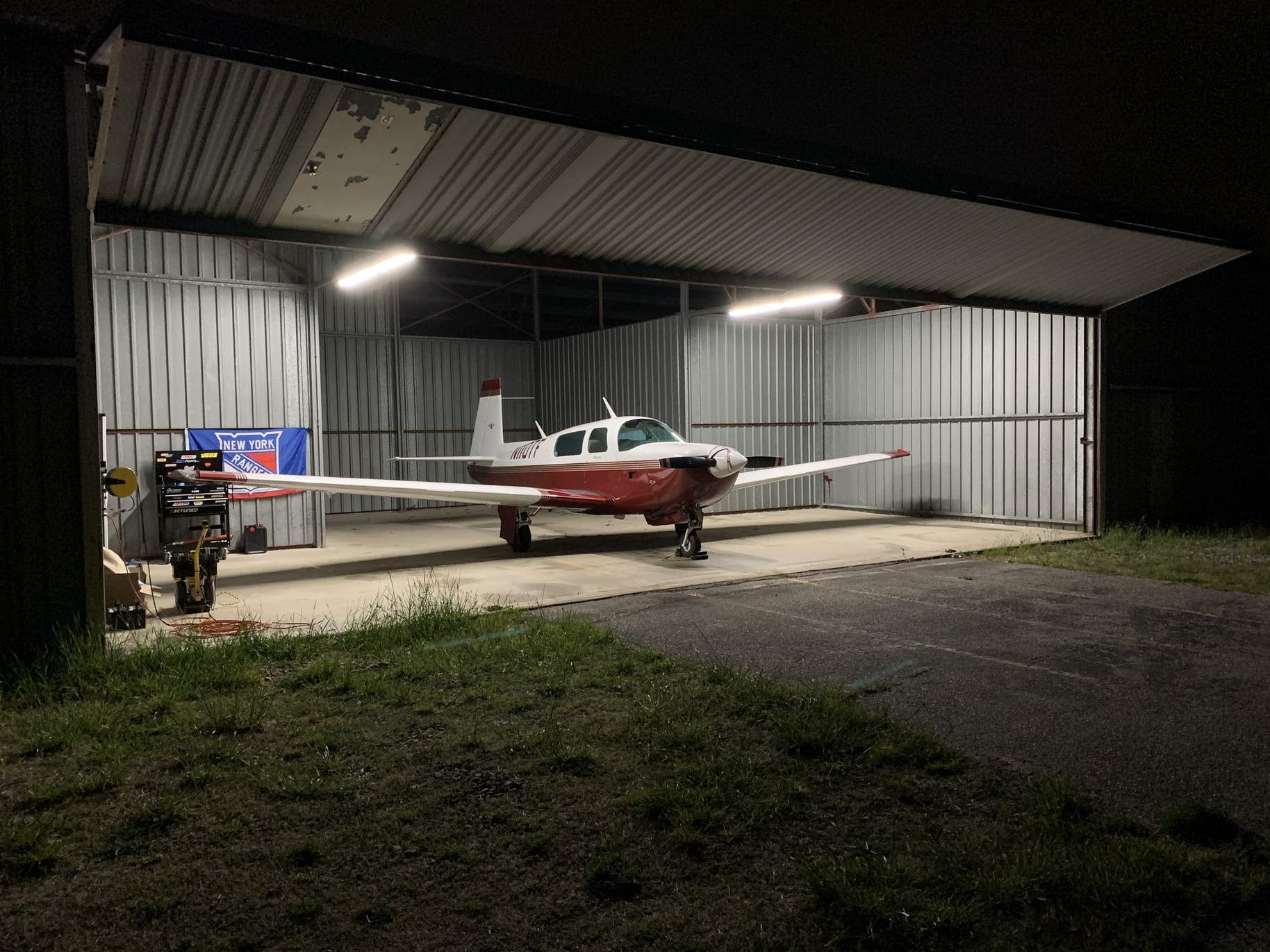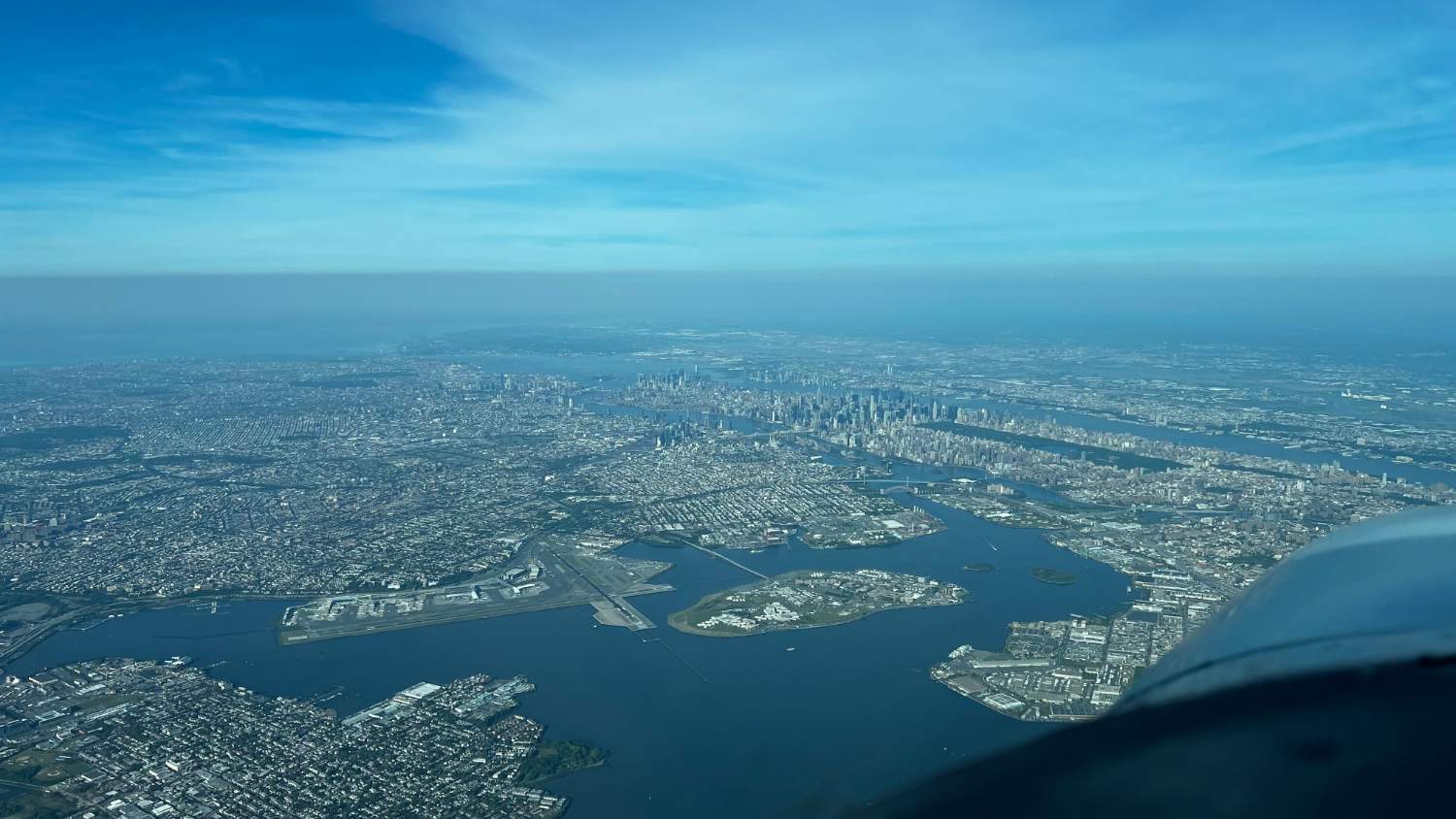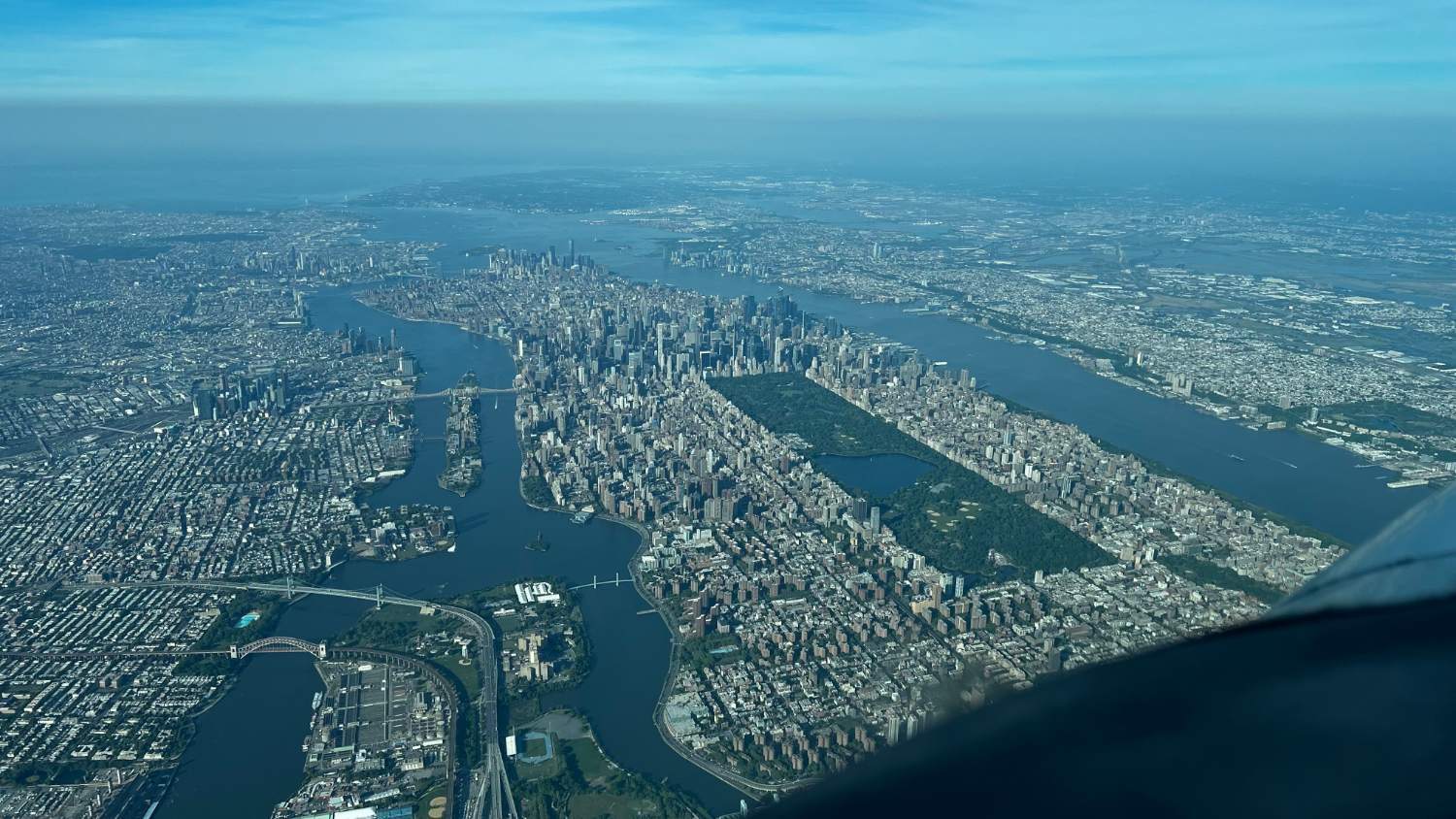
dzeleski
Basic Member-
Posts
502 -
Joined
-
Days Won
1
Content Type
Profiles
Forums
Blogs
Gallery
Downloads
Media Demo
Events
Everything posted by dzeleski
-
Not always true. Contact your dealer and ask them to contact Garmin, you may also want to pop an SD card in and collect some logs as well. Make sure you are on the latest G5 software as well because it does a better job of notifying if there is a battery issue. That being said my battery was replaced under warranty because I had a G5 of the effected serials. There is a known issue with the G5s where if you power them up and power them down too quickly they dont fully turn off. You can tell the difference by very carefully looking at the screen, when its still partially on the screen has a green hue to it (but blank) and when its off its completely black. Basically make sure you leave the G5s running for at least until the Navigator self test comes up, click enter/proceed and then power everything off.
-
You can do this as well by clicking any of the reports and clicking the center box that starts out saying “all time” you can then filter that report generation based on a date range. One of either the condensed log book or complete log book should do that for you. You can then press the share button at the top right and print from there.
-
Click into any of those categories and then click the center filter button at the top, you can filter on many things once you do that.
-
It’s at the bottom of the main site: https://drive.google.com/file/d/13TVM79wvS0sqK5Bgts2RbonPuJ1q3TfK/view?usp=sharing
-
I did my install in two steps because my Vacuum AI failed so I decided to go to a G5 before doing the rest of the install. Prices are as follows: In 2020: $7,580 AI removed G5 installed EDM-730 fuel flow installed interface with IFD-440 Replaced GA56 with GA45 antenna fixed pitot/static leaks IFR cert In 2021: Quoted at $23,250 Actual cost $32,725 G5 HSI/GAD29B/GMU-11 $7,000 GAD-13/GTP-59 $1,250 GFC-500 with Trim and Yaw $23,250 Vac system removed Traded in stec-30 ($2,000 credit) During install some issues popped up, alt encoder was installed horrifically and needed to be replaced $500, oil temp gauge was bad I found a replacement and they swapped it $250, standby vac was removed; new intake pipe on #4 was needed $800, Trim system was in poor mechanical condition required disassembly/cleaning/re greasing $1,000, IFD440 update $125, IFR cert $425, glareshield required some work $125. Total cost was $40,303. Does not include the IFD440, EDM-730, or the PS Engineering PMA450B all of these were done using trade ins and installed by me. Please note I live in one of the most expensive areas in the country and the shop rate was $125/hr at the time. There was exactly one issue after install and that was that the V speeds were programed in kts and not MPH, this required conversions from MPH into kts and then added, this displayed itself as ESP early engagement or late engagement depending on where you were in the envelope. Hope that helps.
-
Mine were in the effected range but I had no issues with my servos. Since I fly in IMC a good amount I just had them swapped anyway. Took about a day and the total bill I got was $0.
-
We will be there! Missed last year so I’m looking forward to this year.
-
ALT LOW VOLTS bus breaker keeps popping
dzeleski replied to warrenehc's topic in General Mooney Talk
This might have something like a B&C LR3D-14 Linear Regulator installed. The 2amp breaker is a sense line. https://www.aircraftspruce.com/catalog/eppages/lr3reg14.php https://www.aircraftspruce.com/catalog/pdf/07-06742-Wiring.pdf https://www.aircraftspruce.com/catalog/pdf/07-06742-Manual.pdf Wiring schematic shows it as a bus voltage sense. The troubleshooting doc says it’s used for voltage regulation and a low voltage alarm. It specifically says this circuit is required for the alternator to function. Youll need to check the installed parts to confirm my wild ass guess however Was any new equipment recently installed? If this guess is correct it seems there is a specific voltage drop minimum from the bus to the pin that is the voltage sense. You may also just have a bad connection or chafed wire somewhere. Hope that helps! -
They wont even allow IFR traffic to transit through. I laughed at the controller when they told me that "Must be nice" is what I said to them. I now just fly across the pond when I need to get to WI. Flying in NY and out of NY airspace has thrown me every possible curve ball. At this point nothing bothers me besides getting 3 full reroutes in a row Meanwhile in NY, directly over JFK: Or directly over LGA: Or over NYC itself:
-
1992 M20J MSE N9127S available for sale soon
dzeleski replied to gevertex's topic in Aircraft Classifieds
I was just gonna say this, ask Jimmy for his guide its free since you own a J. The price guide goes into this situation on over valuing by adding every detail. The number has to have a ceiling otherwise it wont sell. Go to and click inventory: https://www.gmaxamericanaircraft.com -
This thread might help. I assume that E has hydraulic flaps.
-
Make sure you aren't accidentally knocking the the trim switch if you have one. It will immediately disconnect the AP.
-
It definitely is. They work I have used them before in Aspen as my lungs were not built for higher alts (lived at sealevel my whole life). It would still be a critical situation but it would definitely buy you several minutes of consciousness which would 100% let you get out. One large can supports 200 breaths. We breathe 12-20 times a minute, thats 10 minutes of extra O2. Which is way better then none.
-
Glazed Cylinder Borescope Images
dzeleski replied to TheAv8r's topic in Vintage Mooneys (pre-J models)
Keep and eye on the consumption but go enjoy your airplane. Keep extra oil in the back just in case. -
Glazed Cylinder Borescope Images
dzeleski replied to TheAv8r's topic in Vintage Mooneys (pre-J models)
Agreed, thats what my engine averages out to over the course of a full 50 hour interval. First 25 hours it uses less then the last 25. -
What about do the GFC 500 and then pay for a quality touch up job at some point? The paint in those photos doesn’t look all that bad. For my J I picked a GFC 500 over paint and interior and I don’t regret a single second of it.
-
I guess I have 13 months to live (just kidding)
dzeleski replied to DonMuncy's topic in Avionics/Panel Discussion
To me this feels like a planned PR mission. Wait for the blow back and then throw everyone half a bone to get everyone to calm down so the bad press goes away. All it takes is one iOS or Android update to break the legacy app and then they get to say “oh we aren’t adding features to it sorry”. I use foreflight so this doesn’t effect me what so ever, but companies pulling this crap pisses me off regardless. Unless they are willing to provide bug fixes and support for future OS versions it’s giving an EOL without giving one. -
Sporties SP 200 hand held transeiver bit the dust
dzeleski replied to DonMuncy's topic in Avionics/Panel Discussion
Maybe give Japan Radio an email and see if they still service them: https://www.jrc.co.jp/en/contact/marine#anc01 -
Sporties SP 200 hand held transeiver bit the dust
dzeleski replied to DonMuncy's topic in Avionics/Panel Discussion
The SP-200 and SP-400 were produced by Japan Radio. The new PJ2 is built by Rexon, which is based on the RHP-530. I have used a Yaesu FTA-250L for 6 years now and I regularly call clearance with it before Im in the airplane. I keep the jack adapter plugged into it, and it cant fall out because it gets screwed in. -
Glazed Cylinder Borescope Images
dzeleski replied to TheAv8r's topic in Vintage Mooneys (pre-J models)
I ran into break in issues after I had to replace a cylinder a couple of years ago. I followed the Lycoming break in procedure to a T. The shop that overhauled the cylinder told me to run it harder for a few hours so I ran it WOT, ROP, at 3000 feet for around ~2 hours. This was during cooler months so it was easier to keep temperatures in check. That actually fixed the break in delay and the cylinder has been perfect since. Run the thing harder, get the pressures up so those rings really get seated. The PDF I linked above from Mike also recommends running as close to 100% power as possible. -
Not sure if its just the lack of pixels... it seems the flaps were not down either. Before I left for the West coast last year I worked with my instructor to get the gear up and hold it down in ground effect for what felt like an eternity. The speeds you can build at sea level are quite impressive, but I didnt really realize why we were being so "dramatic" about it. It wasn't until I took off in CO at 9,000 DA did I realize that the eternity in ground effect is completely required to actually take off in those conditions. (It was my first time taking off with a DA above 4-5k)
-
Glazed Cylinder Borescope Images
dzeleski replied to TheAv8r's topic in Vintage Mooneys (pre-J models)
It should be a orangey brownish varnish looking coating. Its generally very patchy and inconsistent. The intensity of that color can change a bit, it can be really faint. Nickel should generally break in extremely quickly. https://resources.savvyaviation.com/wp-content/uploads/slides_airventure2021/2021-07-28 0830 F7 Cylinder Break-In Do it Right.pdf What does the oil consumption look like? Some pooling can happen if the rings just happen to line up the right way. I would fly the airplane for a bit and borescope again. Glazing is Glazing, you dont need photos from an airplane engine, Autos have the same problem: https://www.texassaltwaterfishingmagazine.com/gear/boats/excessive-idle-speed-operation-cylinder-wall-glazing -
A few years old but might still be relevant:
-
I am not, if I was I would be floating down the runway which is not the case. I can pick a spot and land on it nearly every time. The rollout is no more then ~1000 feet. At KISP for instance I can aim for the numbers on 24 and be turned off the runway onto 15L. I personally dont like that approach and dont use it, nor does my instructor. Just my .02, im not here to argue. What I do works for me and my airplane and my instructors have been happy with that technique.
-
Its also on your FAA registry if you needed it without running out to the airport: https://registry.faa.gov/AircraftInquiry/Search/NNumberResult?nNumberTxt=6901N





